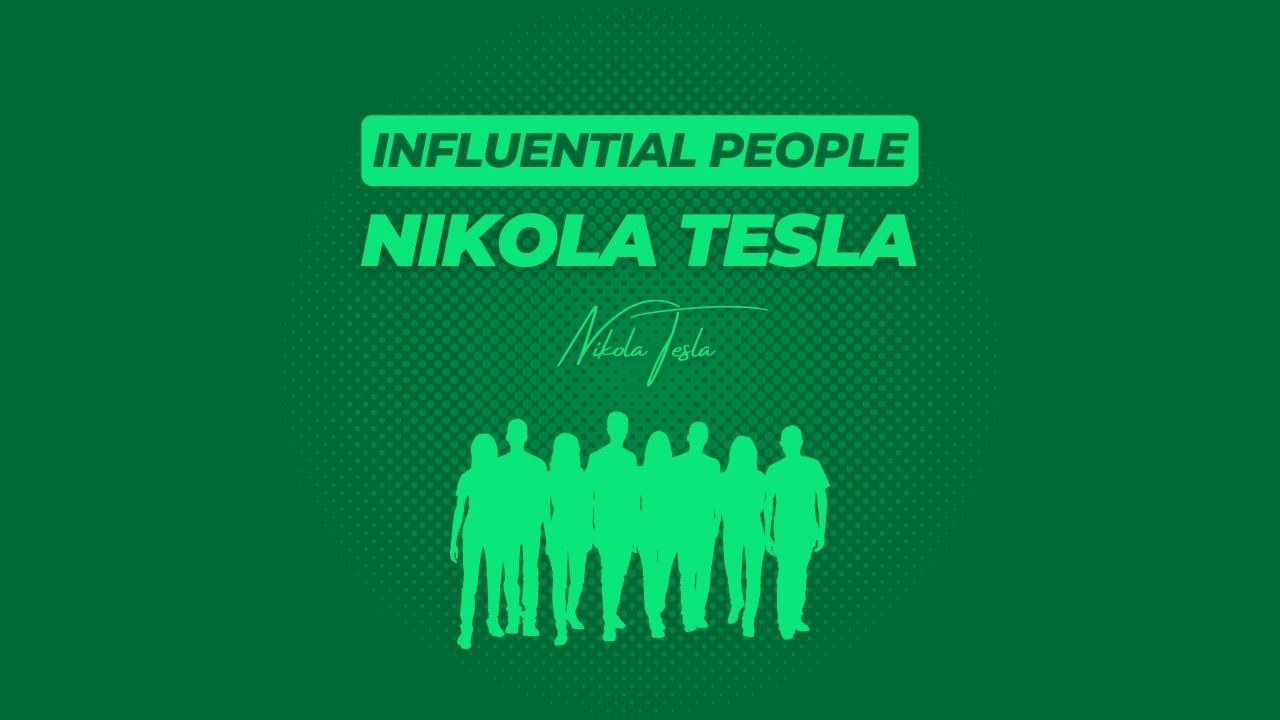Nikola Tesla, the mastermind behind numerous inventions that have sculpted the landscape of modern technology, remains a towering figure in the annals of science and innovation. Born in 1856 in what is now Croatia, Tesla’s journey from a keenly observant young man to one of the most influential inventors of the 20th century is a testament to the power of vision and persistence. His development of the alternating current (AC) system fundamentally transformed how electricity was transmitted and used, ushering in a new era of energy efficiency and reliability. Beyond AC, Tesla’s contributions extended to the creation of the Tesla coil and pioneering efforts in wireless communication—technologies that presaged today’s wireless networks and the Internet.
Tesla was not only a prolific inventor but also a visionary whose ideas were often decades ahead of their time. He imagined a world interconnected by technology, where information and power were freely accessible to all. This article aims to delve into how Tesla’s inventive genius and distinctive personality traits mirror the spirit of innovation and creativity so vital in the digital age. By exploring Tesla’s life and work, we seek to inspire a reflection on how his enduring legacy influences and shapes modern technology, from sustainable energy solutions to the very framework of our online interactions.
Early Life and Education
Nikola Tesla was born in 1856 in Smiljan, a small village in what is now Croatia, into a family where ingenuity and scholarship were part of daily life. His father, a priest in the Serbian Orthodox Church, was a gifted writer and orator, while his mother, though unschooled, possessed a remarkable ability to craft mechanical appliances and was known to have a profound influence on her son’s interest in invention.
Tesla’s fascination with engineering took root early. He was intrigued by the demonstrations of electricity he saw at school, an interest that swiftly grew into an obsession. His formal education began in Croatia, where he demonstrated prodigious ability in mathematics and physics, allowing him to perform complex calculations mentally, a skill that would later define his inventive processes.
After completing his schooling in Croatia, Tesla attended the Austrian Polytechnic School at Graz, where he studied electrical engineering. It was here that he first conceived the idea of a rotating magnetic field, an innovation that would eventually lead to the development of alternating current technology. His studies, however, were interrupted by personal challenges, including his father’s death and his own gambling issues, which forced him to work as a draftsman and later as a teacher to support himself.
In 1884, seeking opportunities that matched his ambitions, Tesla immigrated to the United States, arriving with little more than a letter of introduction to the renowned inventor Thomas Edison. In New York, Tesla briefly worked for Edison, focusing on improving the designs of Edison’s direct current generators. However, philosophical differences and business disagreements over the viability of alternating current versus direct current led to a parting of ways—an event that marked the beginning of Tesla’s journey towards establishing his own reputation and contributions to electrical engineering. This period set the stage for his groundbreaking work, shaping the trajectory of his innovative pursuits and future achievements in the realm of science and technology.
Major Inventions and Achievements
Nikola Tesla’s body of work is vast and varied, with his inventions laying foundational stones for numerous modern technologies. Among his most significant contributions are:
Alternating Current (AC) Electrical System
Tesla’s development of the AC motor and transformer in the 1880s revolutionised the way electricity was transmitted over long distances. This system allowed for more efficient and safer transmission of electrical power, overcoming the limitations of the direct current (DC) systems used at the time. Today, Tesla’s AC system is the predominant method for electrical power transmission worldwide, enabling the widespread distribution of electricity and powering homes, businesses, and industries globally.
Tesla Coil
Invented in 1891, the Tesla Coil is an electrical resonant transformer circuit used to produce high-voltage, low-current, high-frequency alternating-current electricity. Tesla used the coil to experiment with electrical lighting, x-rays, and wireless power, and it has since been used in radio technology, TV and radio transmitters, and in medical equipment. The principles of the Tesla Coil are still utilised in radio technology and in the design of equipment that requires high voltages.
Wireless Communication
Tesla’s work in wireless communication predates the achievements of Guglielmo Marconi, who is traditionally credited with inventing the radio. In the late 1890s, Tesla demonstrated a wireless communication system which he proposed could transmit information, sound, and even images across the globe. Tesla’s vision of global wireless communication is realised today in the proliferation of wireless networks, including the internet, mobile telephony, and satellite communications that form the backbone of modern connectivity.
Besides these well-known inventions, Tesla’s repertoire included several lesser-known yet remarkable projects and devices:
Bladeless Turbine
Tesla invented a highly efficient, bladeless turbine in the early 20th century. Unlike conventional turbines, it used smooth, spinning discs to harness energy from fluids. While not immediately successful commercially, modern interest in the Tesla turbine has resurfaced with the search for durable and efficient energy solutions.
Magnifying Transmitter
An advanced version of the Tesla Coil, this device was designed to wirelessly transmit electrical energy. It was part of Tesla’s grander vision for the Wardenclyffe Tower project, which aimed at global wireless communication and free energy transmission. Although never completed, the concept has influenced modern wireless power research and developmental wireless energy transfer systems.
Radio-controlled Boat
Demonstrated in 1898, this innovation was the first instance of a remote-controlled model, which Tesla believed could lead to automated, unmanned vehicles. This invention was a precursor to modern drone technology and has implications for various technologies from toys to military drones.
Tesla’s inventiveness was not confined to just practical inventions; his ideas often extended into what might be deemed science fiction, including proposals for a “thought camera” that could visualise thoughts and concepts. While many of these ideas were never realised in his lifetime, they underscore his extraordinary foresight and continue to inspire innovation and exploration in multiple scientific fields.
Challenges and Controversies
Nikola Tesla’s career, although marked by groundbreaking achievements, was also riddled with numerous challenges and controversies that affected both his work and legacy.
Financial Difficulties
Throughout his life, Tesla faced significant financial hurdles. Despite his early successes, Tesla spent large sums on numerous projects, relying heavily on investors to fund his ambitious ideas. His tendency to focus more on invention than commercial viability often led to financial instability. After parting ways with Thomas Edison, Tesla found some support from investors like George Westinghouse, who helped finance his work on the alternating current system. However, his later projects, notably the Wardenclyffe Tower, struggled to secure and maintain financial backing, ultimately leading to his financial ruin.
Rivalry with Edison
Tesla’s professional relationship with Thomas Edison began and ended in acrimony, largely due to their conflicting views on electricity. While Edison promoted direct current (DC), Tesla was an ardent supporter of alternating current (AC). This difference led to the infamous “War of the Currents,” where Edison undertook a public campaign to discredit alternating current, fearing it would overshadow his DC systems. Tesla’s AC eventually proved to be more efficient for long-distance power transmission, but the bitter rivalry left Tesla ostracised from many in the scientific community who were allied with Edison.
Wardenclyffe Tower Project
Perhaps Tesla’s most controversial project was the Wardenclyffe Tower in New York, intended to provide free wireless energy across the world. Tesla envisioned a system that would not only transmit energy but also information, including voice messages and images, wirelessly across great distances. However, the scientific community was skeptical, and financial backers were hesitant to support what seemed like fanciful ideas. The project was never completed, leading to a significant blow to Tesla’s career and reputation.
Posthumous Recognition
During his lifetime, Tesla was often seen as a fringe scientist, overshadowed by contemporaries like Edison and Marconi. His work was not fully appreciated, and he died impoverished in 1943. However, the latter half of the 20th century and the early 21st century have seen a significant re-evaluation of his contributions. Tesla is now celebrated as a pioneer of modern electrical engineering, wireless communication, and sustainable energy. Institutions and technologies bearing his name, including the Tesla electric car company and numerous Tesla societies worldwide, reflect the growing recognition of his innovations and foresight.
The story of Nikola Tesla is one of brilliance and eccentricity intertwined with deep struggles against financial, professional, and social adversities. His posthumous recognition contrasts starkly with his relatively obscure and troubled personal circumstances during his life, offering a poignant narrative of a visionary far ahead of his time.
Personality and Philosophy
Nikola Tesla’s personality and philosophical beliefs were as distinctive and profound as his inventions. His unique characteristics and ideas not only shaped his career but continue to resonate strongly in today’s technology-driven society.
Personal Traits
Tesla was known for his remarkable work ethic, often labouring on his inventions for days without rest. He claimed to require only two hours of sleep a night, although he occasionally took naps. His intense focus and dedication were coupled with notable eccentricities—Tesla was particular about cleanliness and hygiene, had an aversion to pearls and women’s earrings, and developed various phobias over the years. Despite these quirks, or perhaps because of them, Tesla was able to dive deeply into his work, pushing the boundaries of contemporary science and technology.
Philosophies on Energy and Free Distribution
Tesla was a proponent of free energy—the idea that the world should have unlimited access to energy resources without the constraints of cost or environmental impact. His project at Wardenclyffe Tower, which aimed to transmit electrical power without wires and at no cost to the user, embodies this philosophy. Today, this idea resonates with global efforts towards sustainable energy and reducing the carbon footprint. Tesla’s vision aligns closely with current trends in open-source technology and collaborative innovation, where sharing knowledge and resources is seen as key to solving complex global challenges.
Improving Humanity Through Technological Advancement
Tesla believed strongly in the potential of technology to improve the human condition. He saw his inventions as not merely scientific advancements but as means to elevate society, enhance global connectivity, and reduce suffering. This belief in technology as a tool for social and moral improvement is reflected in modern movements towards tech-driven solutions in medicine, education, and environmental conservation.
Tesla’s forward-thinking perspectives on energy efficiency, resource management, and the role of technology in society anticipated many of the challenges and debates we face today. His insistence on the possibility of harnessing natural forces for the benefit of all humanity offers a lasting legacy that encourages current and future generations to keep looking for innovative ways to address the world’s most pressing issues. His life and work exemplify how individual creativity and a deep commitment to public welfare can drive technological progress that is both transformative and benevolent.
Tesla’s Relevance to Today’s Digital and Social Environment
Nikola Tesla’s pioneering ideas and inventions laid foundational stones for many technologies that are integral to the modern digital and social environment. His work presaged several key technological frameworks and continues to influence innovation today.
Wireless Communication and the Internet: Tesla’s experiments with wireless communication in the late 19th and early 20th centuries were groundbreaking. His development of the Tesla coil and later, more ambitious projects like the Wardenclyffe Tower, aimed to create a global communication system that could transmit messages, data, and even power without physical connections. This concept is strikingly similar to modern wireless internet and mobile communication technologies, which rely on electromagnetic waves to transmit data across global networks without wired connections. Tesla’s vision of a world connected through wireless technology has been realised through the internet, WiFi, and cellular networks, making global communication seamless and ubiquitous.
Impact on Current Innovations
Electric Vehicles (Tesla Motors)
While not directly related to Tesla’s own work, Tesla Motors, named in his honour, epitomises his vision for the use of electric power in transportation. Tesla’s early experiments with electric motors helped pave the way for the development of modern electric vehicles, which are central to current efforts to reduce reliance on fossil fuels and decrease carbon emissions.
Renewable Energy
Tesla’s advocacy for harnessing natural and renewable energy sources finds echoes in today’s push towards solar, wind, and hydroelectric power. His vision for free, ubiquitous energy aligns with the modern sustainable energy movement, which seeks to solve the twin challenges of energy scarcity and environmental degradation.
Artificial Intelligence
Tesla’s theoretical work on automating systems and his inventions like the radio-controlled boat hint at early concepts of robotics and autonomous control. Today’s AI technologies, which aim to bring intelligence and autonomy to machines, mirror Tesla’s ideas about enhancing human capabilities and efficiency through technology.
Views on Modern Technology-Driven Social and Dating Landscapes
Tesla might view today’s technology-driven social and dating landscapes with both fascination and caution. On one hand, he would likely appreciate how technology has facilitated connectivity and communication, realising his vision of a globally interconnected society. On the other hand, Tesla, who was deeply philosophical and somewhat solitary by nature, might question the depth and quality of relationships fostered through digital means. He would be interested in how technology could be used to genuinely enhance human interaction rather than replace it.
Tesla’s enduring relevance is evident as we continue to grapple with similar issues he addressed a century ago—how to improve human life through technology and how to do so ethically and sustainably. His life’s work serves as a reminder and an inspiration that technological advancement should aim not just for innovation for its own sake, but for the betterment of humanity.
Conclusion: Harnessing Tesla’s Vision: Innovating for a Brighter Tomorrow
Nikola Tesla’s legacy is a tapestry of extraordinary scientific foresight and technological innovation. His contributions to the development of alternating current, the Tesla coil, and early wireless communication technologies laid the groundwork for much of our modern electrical infrastructure and digital connectivity. Tesla’s enduring influence is palpable in various fields, from the sustainable energy solutions championed by electric vehicles to the ubiquitous wireless networks that keep our world interconnected.
As an inventor and thinker, Tesla symbolises the pinnacle of innovation and creativity—qualities that are increasingly crucial in our fast-paced, technology-driven world. His life story is a powerful reminder of how vision coupled with relentless pursuit can lead to profound changes and shape the future. Tesla was not just a man of his time but a visionary who seemed to live with one foot in the future, always dreaming bigger and pushing the boundaries of what was deemed possible.
In today’s world, where technology permeates every aspect of our lives, from how we communicate to how we meet and interact with new people, Tesla’s legacy offers a rich source of inspiration. His belief in the power of technology to improve human lives encourages us to think creatively and innovatively. For those navigating the modern landscapes of online dating, Tesla’s approach can inspire a more thoughtful and inventive engagement with technology, using it not just as a tool for social interaction, but as a means to forge deeper connections and enrich our human experience.
Let us all draw from Tesla’s indomitable spirit and imaginative vision to foster innovations that not only advance our technological capabilities but also enhance the quality of our relationships and our lives. In every swipe, every message, and every digital encounter, there lies the potential to think innovatively, just as Tesla might have envisioned in his most ambitious dreams.






